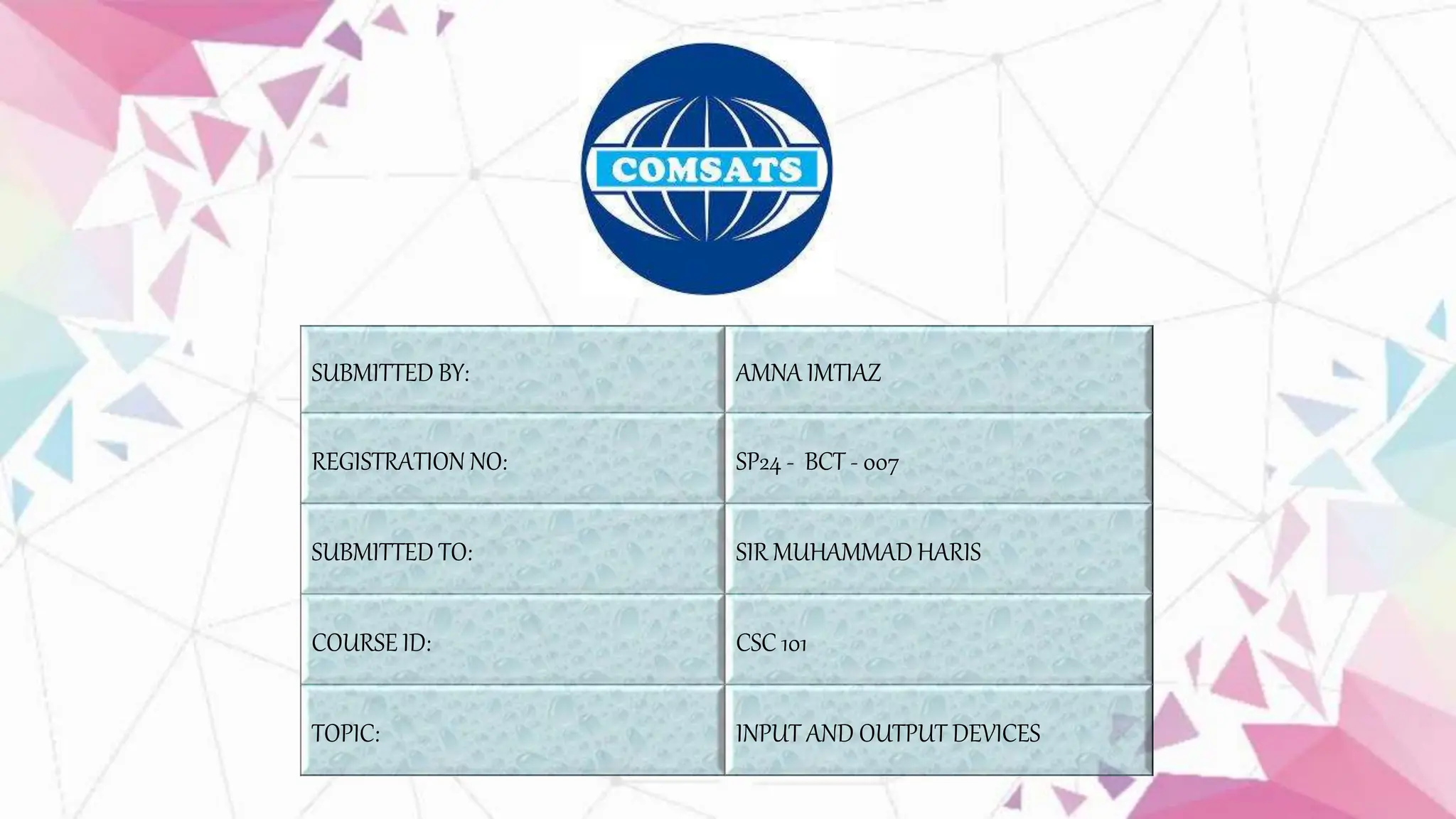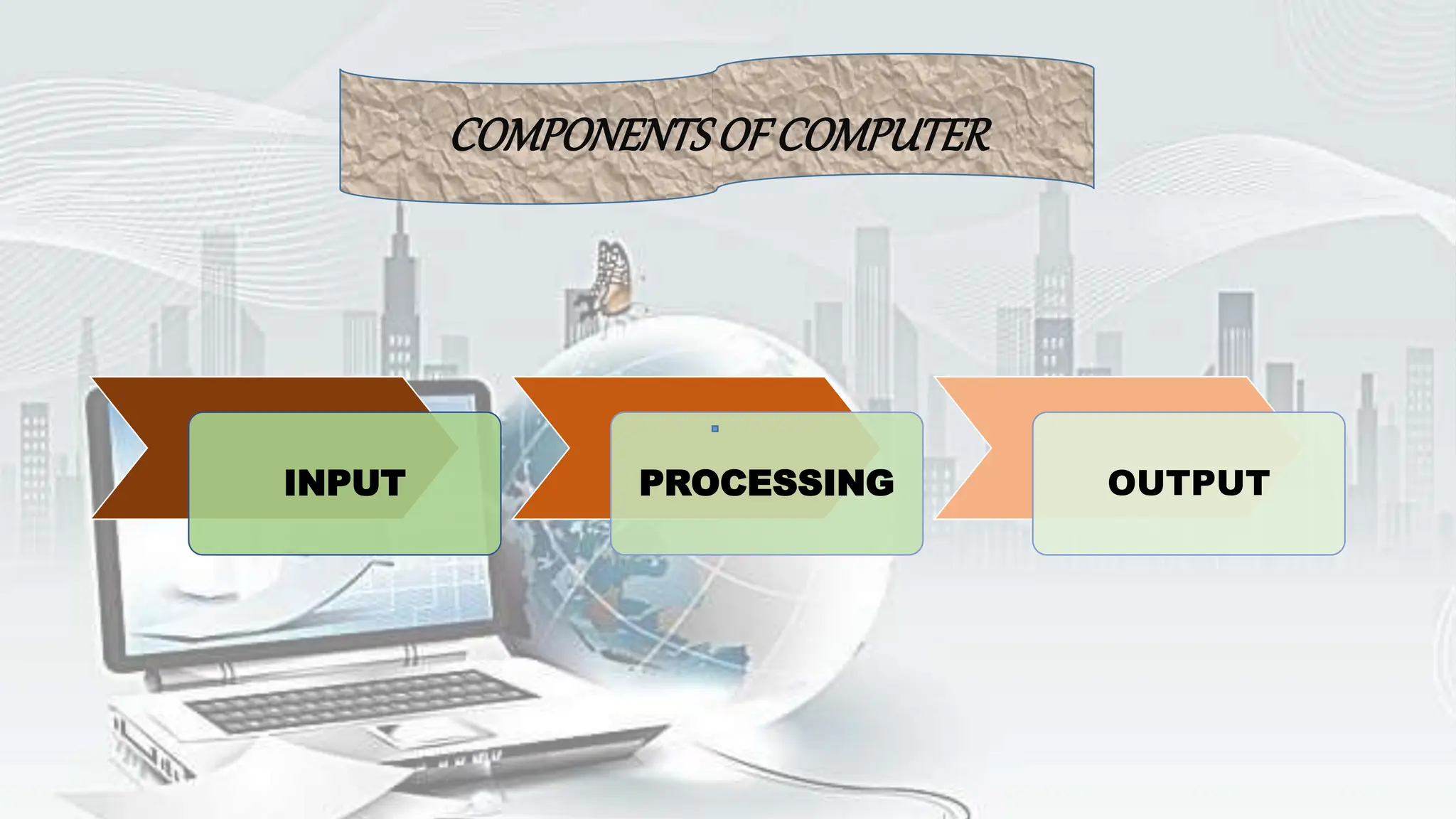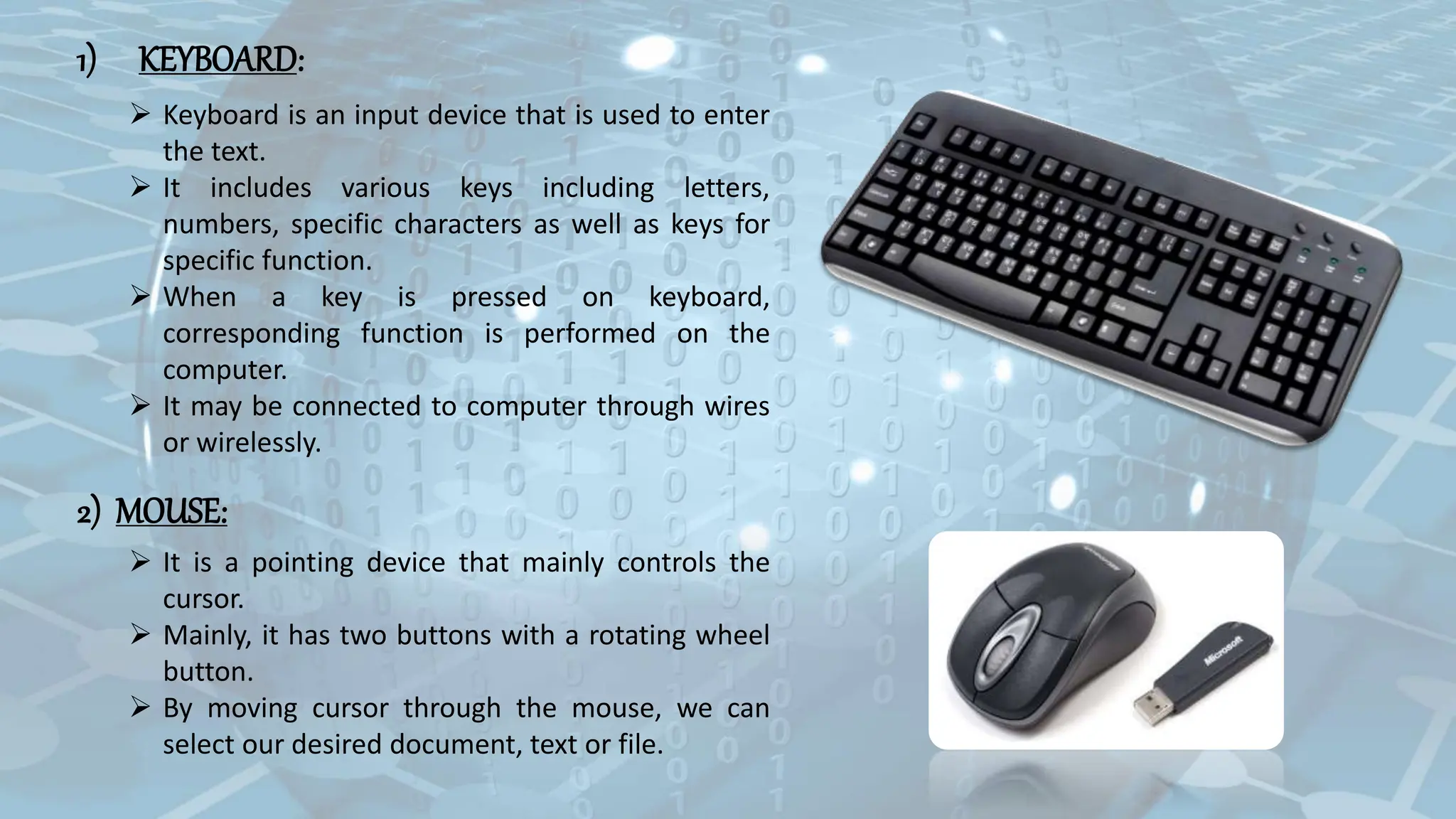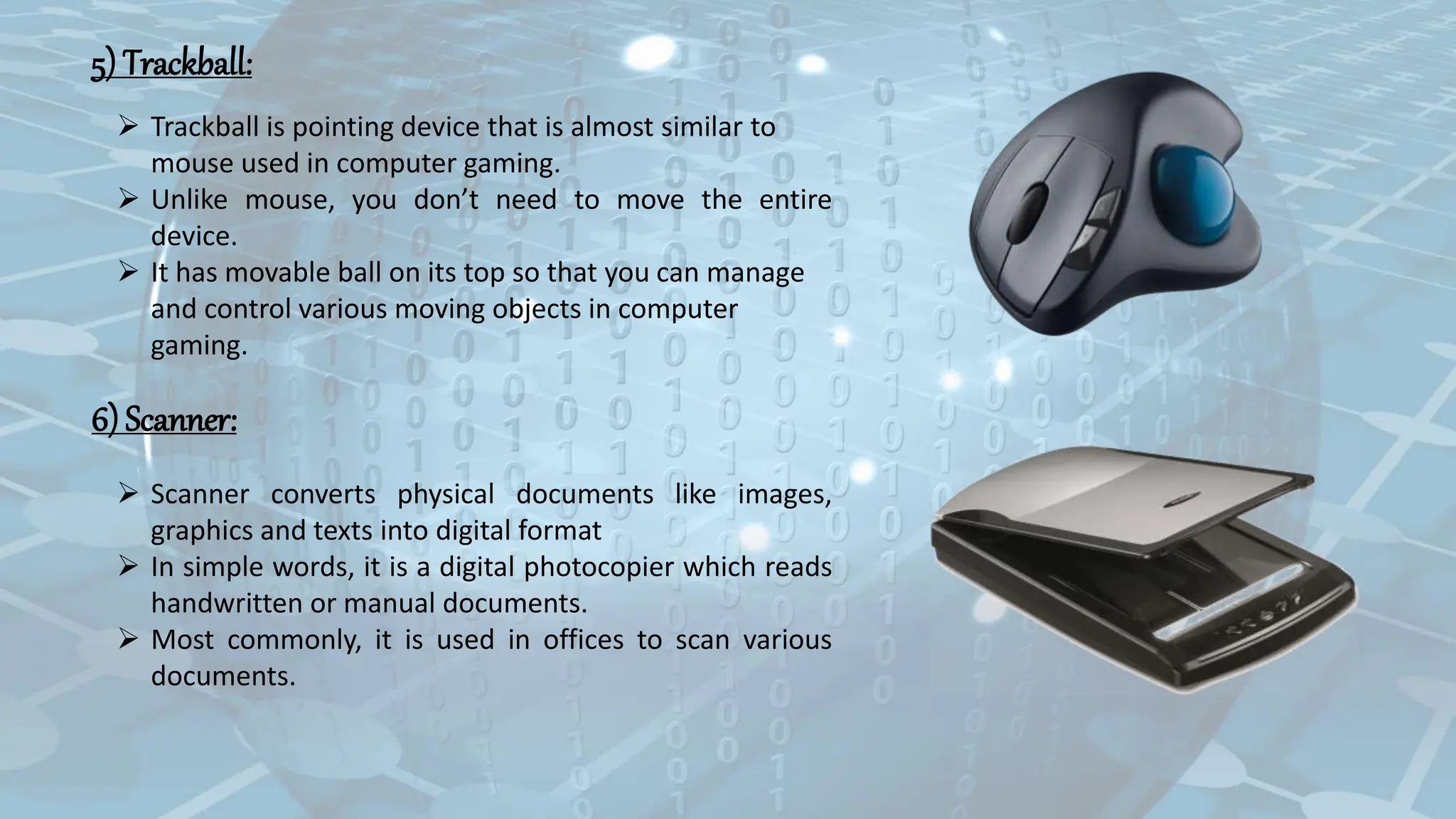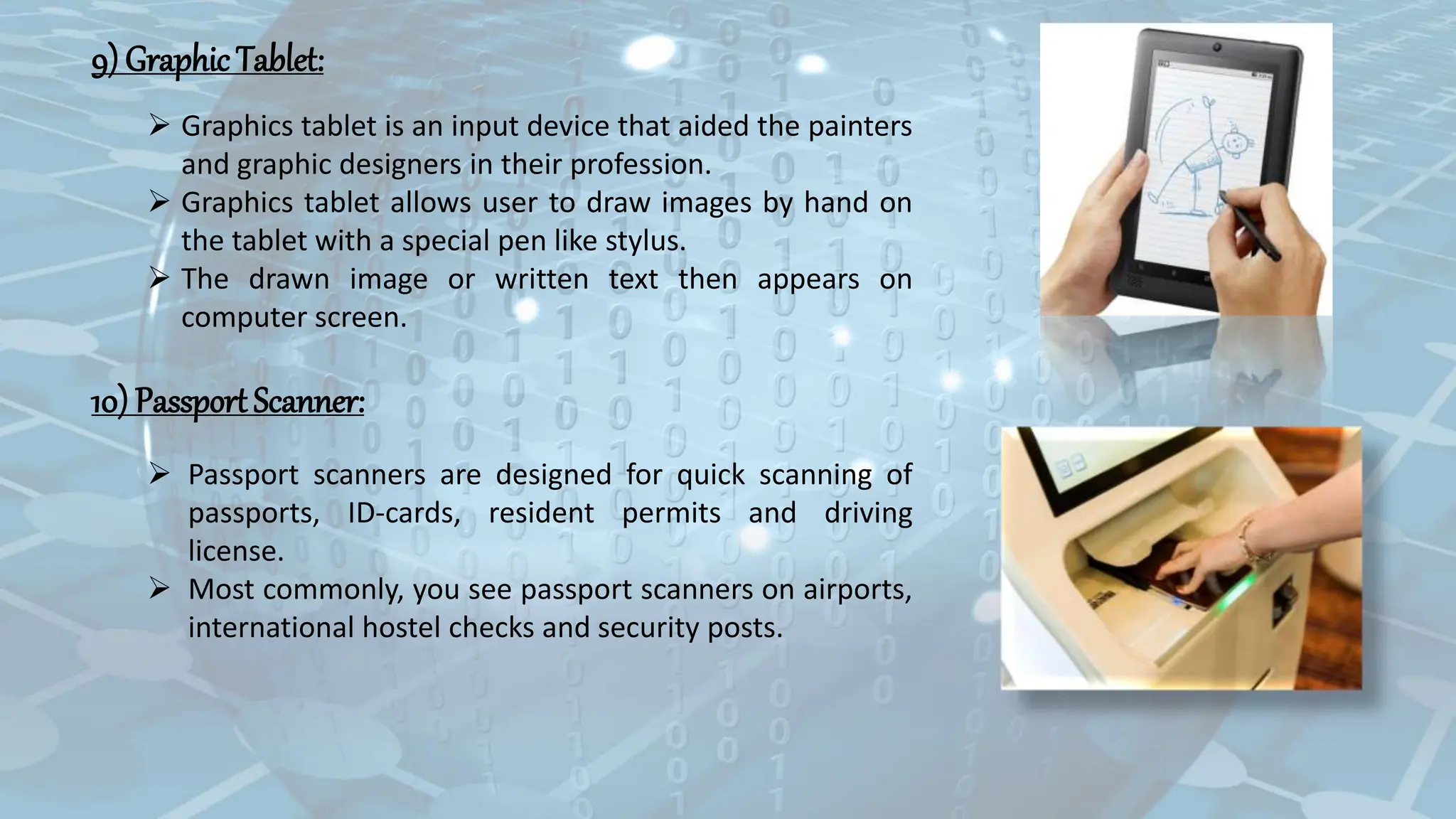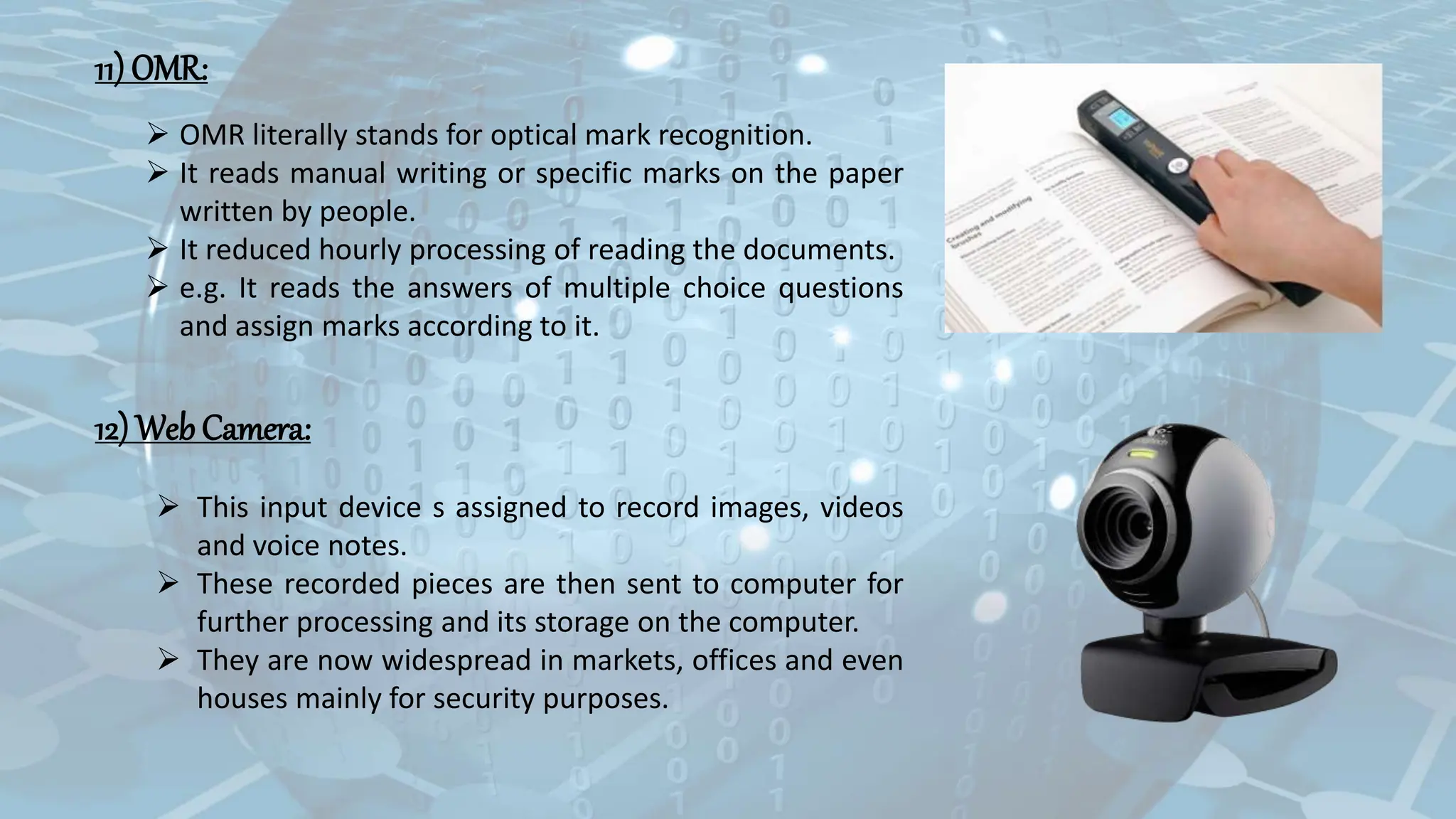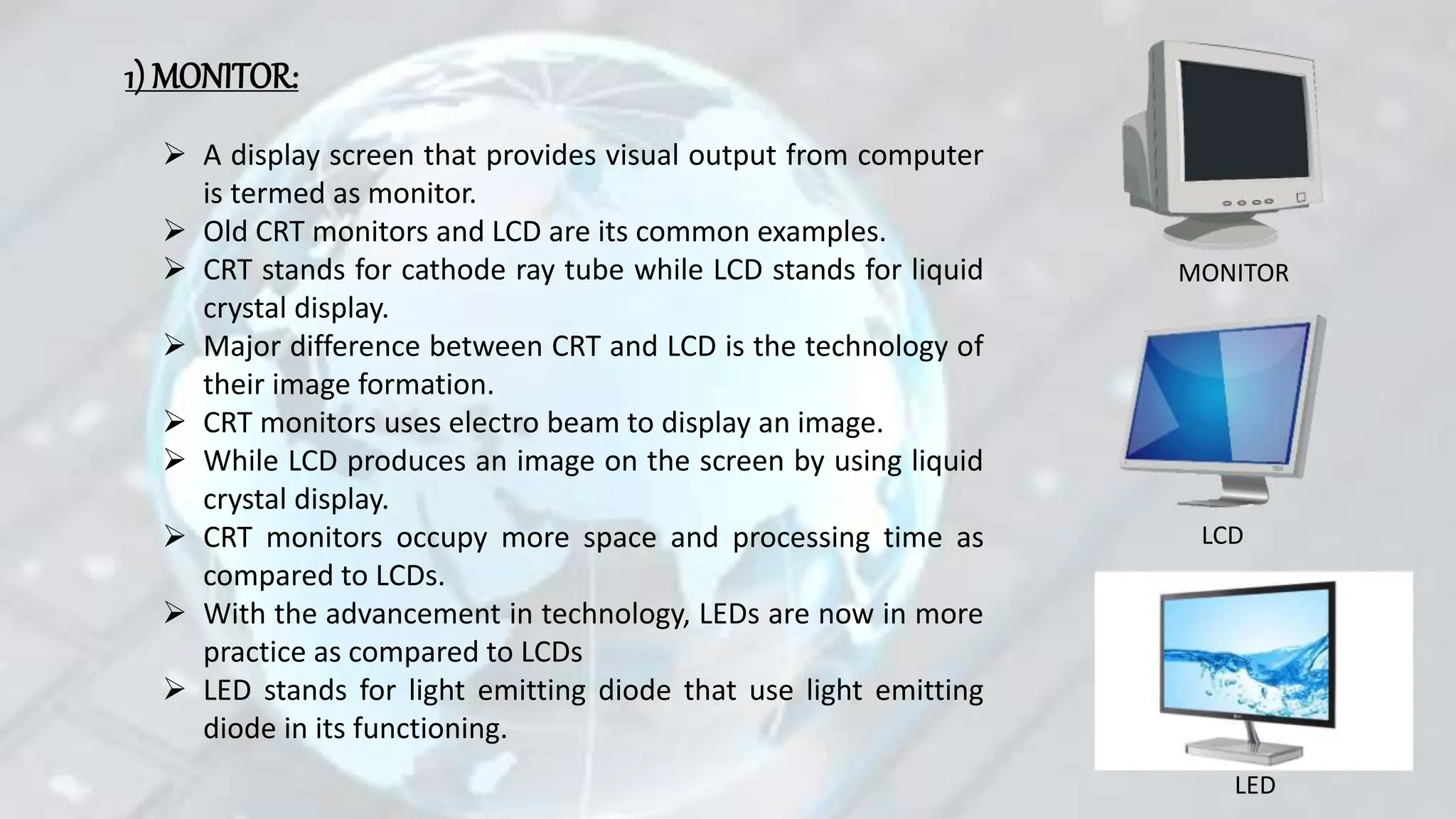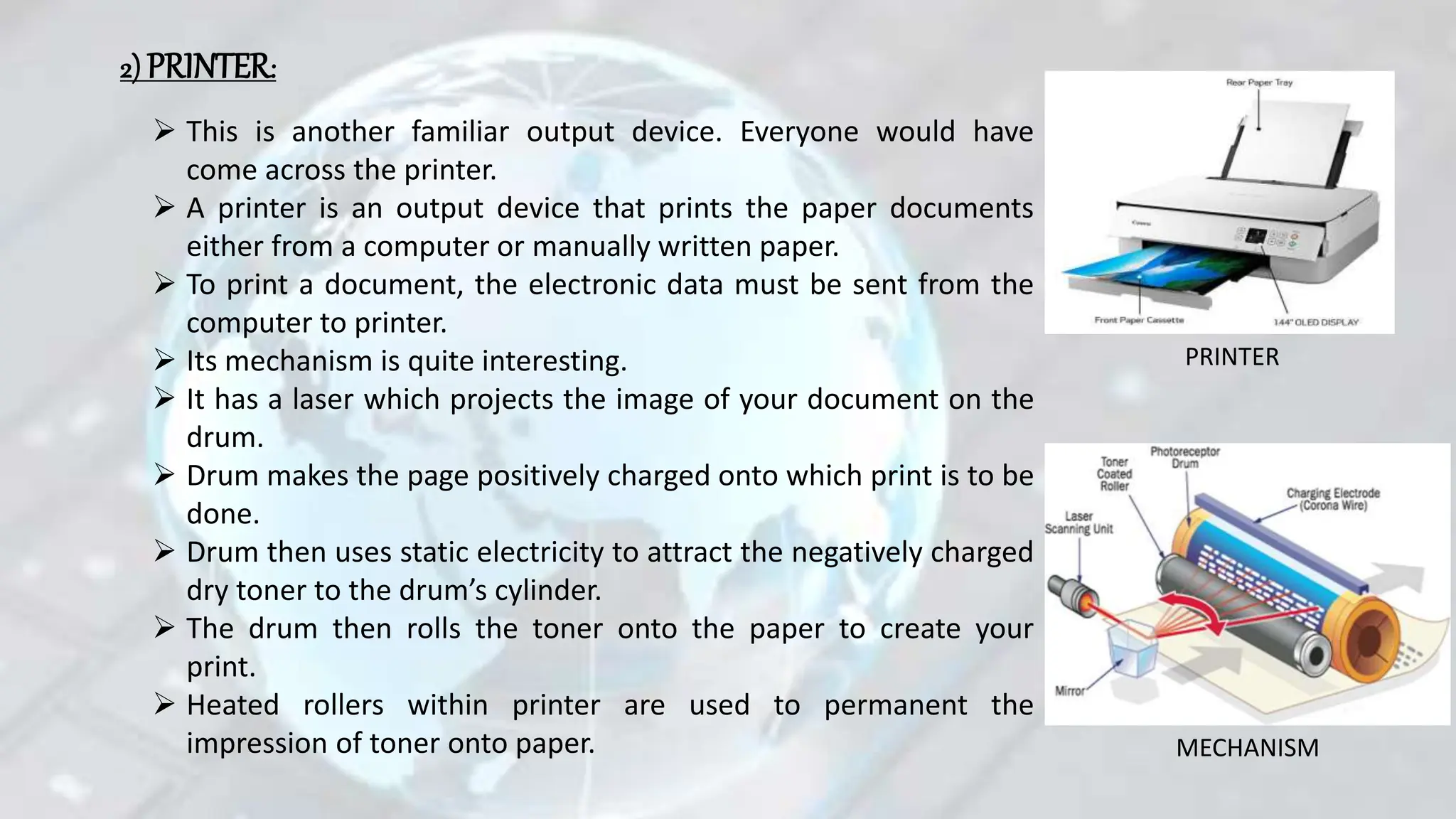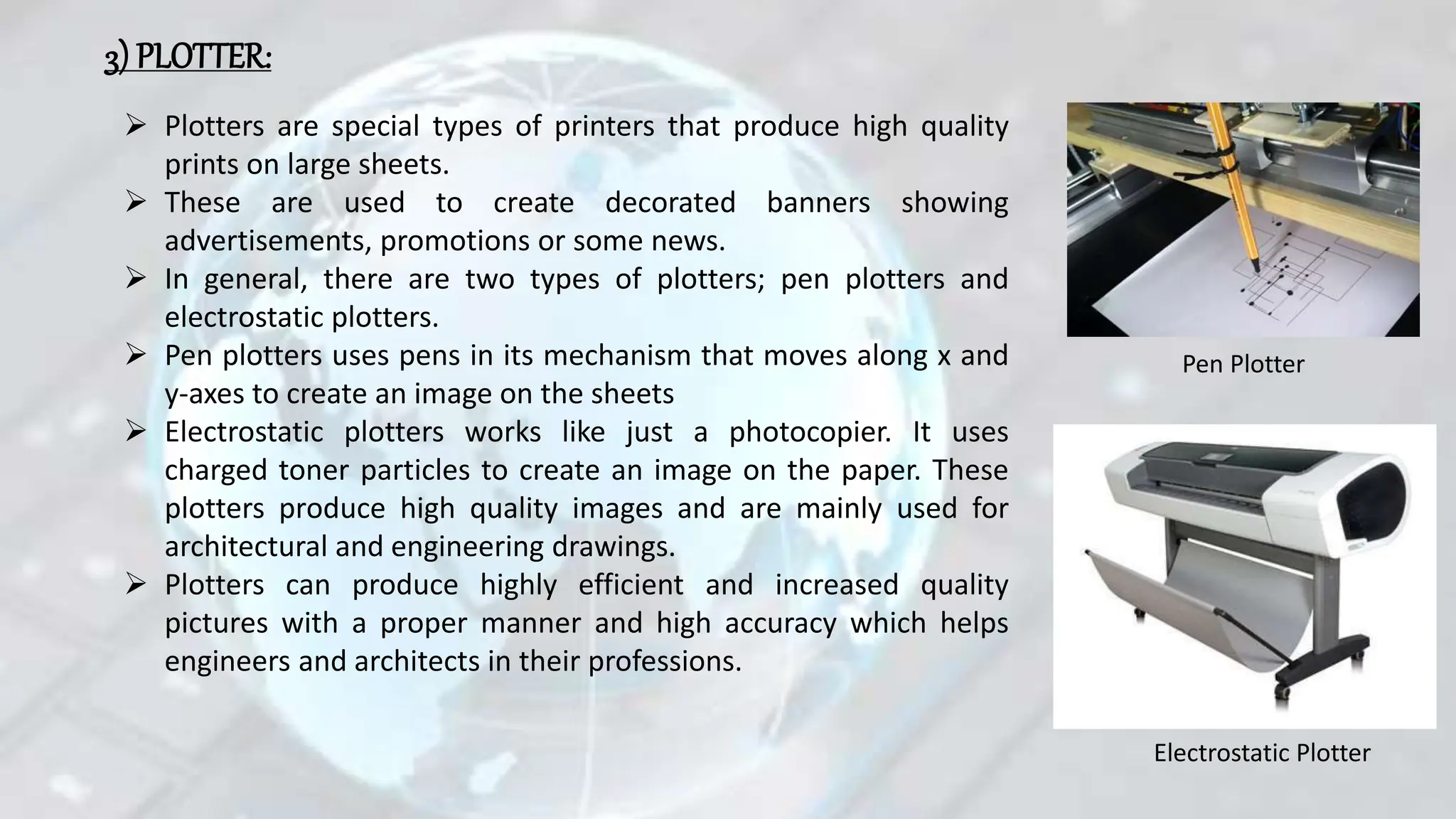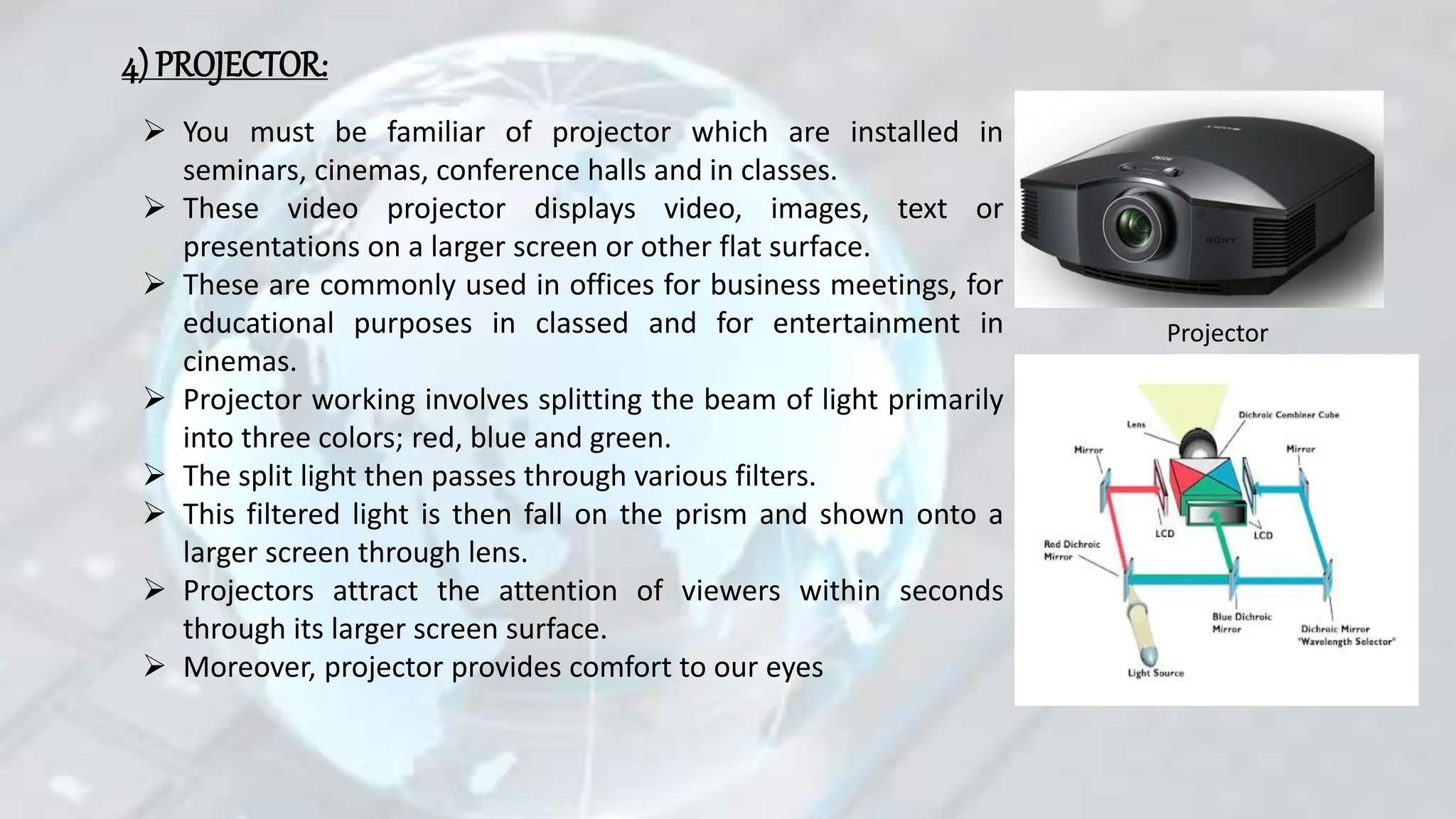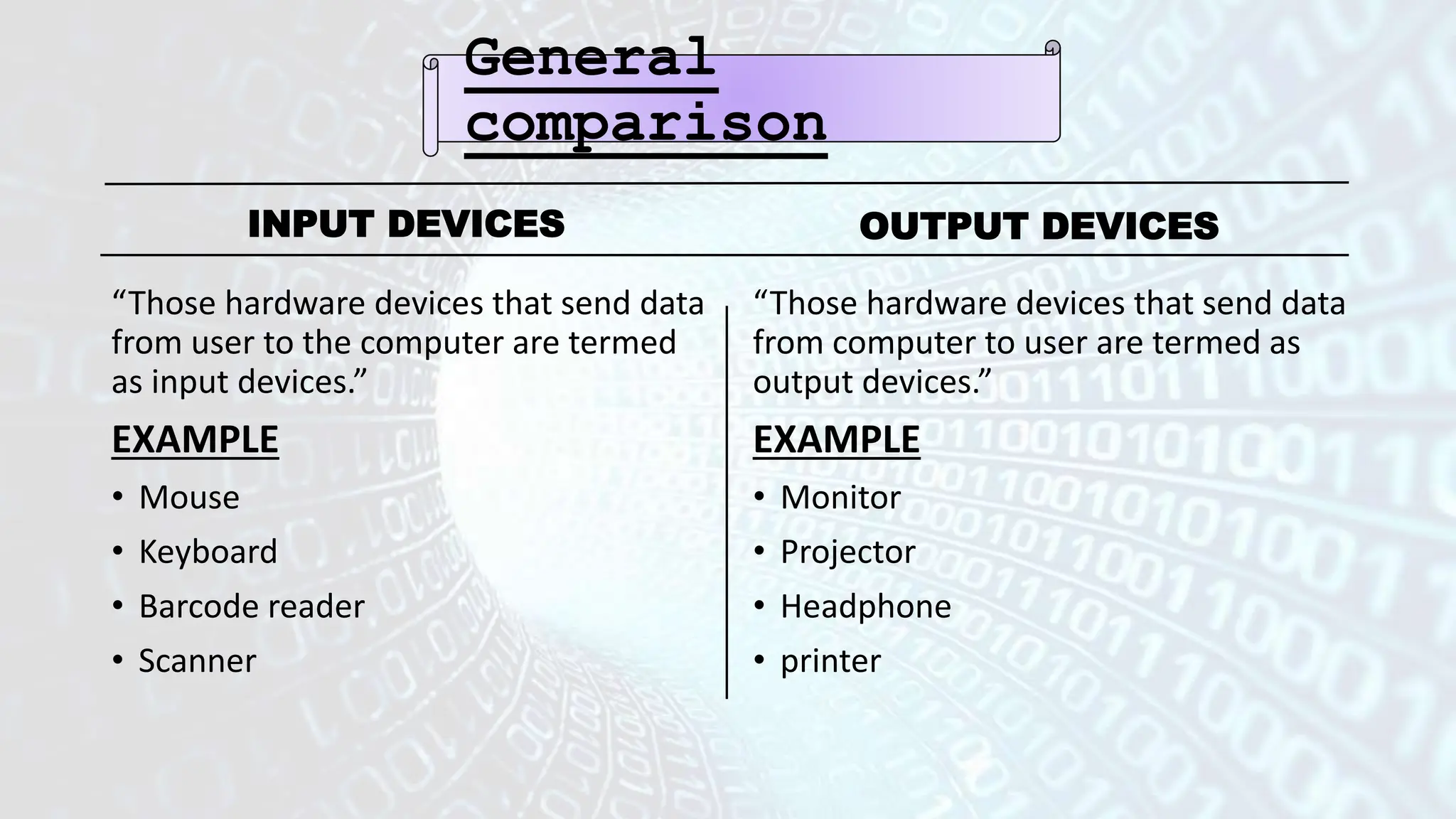The document outlines various input and output devices used in computing, categorizing them into two main sections. Input devices such as keyboards, mice, and scanners are used to provide data to computers, while output devices like monitors, printers, and speakers convey information back to users. Each device is described with its function, common applications, and how it interfaces with a computer.
